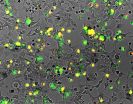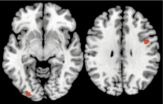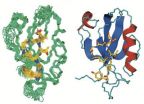(Press-News.org) New research has come up with ways to quickly assess flood damage to houses while also showing most people didn't intend to make changes to reduce their vulnerability after the 2010-11 floods in Australia.
Two separate reports from the National Climate Change Adaptation Research Facility released today show how lessons learned from households affected by the 2010-11 Australian floods can minimise damage under current and future climates.
The report Analysis of Damage to Buildings Following the 2010 Eastern Australia Floods evaluated the role of development controls and analysed house damage to inform flood risk estimation. Based on damage to buildings in Brisbane, Ipswich and Grantham, the project developed a model to rapidly assess impacts following a flood, such as estimating building losses and the likely need to relocate people.
Lead author Dr Matthew Mason said "There are new amendments for flood planning coming into force this year within the Building Code of Australia but some of the issues our research identified are excluded." The new code will not require rebuilt homes to be more resilient to flood and does not address homes built in areas prone to storm surge or flash flooding.
The second report, Impact of the 2010 floods and the factors that inhibit and enable household adaptation strategies is based on surveys and interviews with people directly affected by floods in Brisbane and Emerald in Queensland, and Donald in Victoria.
Lead author Dr Deanne Bird said "There was a lot of frustration over communication.
"After the floods receded, people needed to know what to do, where to get information, how to implement changes to reduce vulnerability, and how to deal with insurance companies."
Their study shows many residents made general home improvements such as installing their 'dream' kitchen rather than concentrating on making their home more resilient to flooding, for example by raising cupboards and air-conditioning units or changing floor coverings.
While most respondents indicated that they were not likely to make any changes to reduce their vulnerability to flood, 55 percent stated that they were likely to, or already had, changed their insurance policy.
Many residents felt they had no options to make changes due to the structural design of their home. In other instances, insurers would only pay to replace like with like.
According to Dr Bird "We saw communities getting on with their lives and largely driving their recovery with stoic endurance. This does not necessarily translate to adaptation to future events but it does reflect strong resilience in the community."
### NCCARF will publish a wide range of peer reviewed reports on Climate Adaptation in Australia leading up to the 2013 National Adaptation Conference, Sydney, 25-27 June.
Full reports available from www.nccarf.edu.au
Mason, M, Phillips, E, Okada, T, O'Brien, J, 2013 Analysis of Damage to Buildings Following the 2010 Eastern Australia Floods. National Climate Change Adaptation Research Facility, Gold Coast pp.102. http://www.nccarf.edu.au/publications/building-damage-following-2010-11-floods
Bird, D, King, D, Haynes, K, Box, P, Okada, T, Nairn, K 2013 Impact of the 2010 floods and the factors that inhibit and enable household adaptation strategies National Climate Change Adaptation Research Facility, Gold Coast. pp.183. http://www.nccarf.edu.au/publications/floods-household-adaptation-strategies
Media enquiries and interviews with Dr Matthew Mason or Dr Deanne Bird:
Brooke Billett, NCCARF Communication Officer: WK: 07 5552 7546 MOB: 0401 259 115 b.billett@griffith.edu.au
Flood research shows human habits die hard
Climate Change experts examine rebuilding
2013-02-13
ELSE PRESS RELEASES FROM THIS DATE:
Blackbirds in the spotlight
2013-02-13
This press release is available in German.
Street lamps, traffic lights and lighting from homes are causing a rise in our night-time light levels. For some time now, scientists have suspected that artificial light in our towns and cities at night could affect plants, animals and us, humans, too. Studies, however, that have tested this influence directly are few. Scientists from the Max Planck Institute for Ornithology in Radolfzell, Germany, recently investigated how light conditions in urban areas at night affect European blackbirds (Turdus merula). They found that animals ...
Copper depletion therapy keeps high-risk triple-negative breast cancer at bay
2013-02-13
NEW YORK (February 13, 2013) -- An anti-copper drug compound that disables the ability of bone marrow cells from setting up a "home" in organs to receive and nurture migrating cancer tumor cells has shown surprising benefit in one of the most difficult-to-treat forms of cancer -- high-risk triple-negative breast cancer.
The median survival for metastatic triple-negative breast cancer patients is historically nine months. However, results of a new phase II clinical trial conducted by researchers at Weill Cornell Medical College and reported in the Annals of Oncology shows ...
UNC researchers discover gene that suppresses herpesviruses
2013-02-13
Chapel Hill, NC – Kaposi's sarcoma-associated herpesvirus (KSHV) and Epstein-Barr virus (EBV) hide within the worldwide human population. While dormant in the vast majority of those infected, these active herpesviruses can develop into several forms of cancer. In an effort to understand and eventually develop treatments for these viruses, researchers at the University of North Carolina have identified a family of human genes known as Tousled-like kinases (TLKs) that play a key role in the suppression and activation of these viruses.
In a paper published by Cell Host ...
'A drop of ink on the luminous sky'
2013-02-13
This part of the constellation of Sagittarius (The Archer) is one of the richest star fields in the whole sky -- the Large Sagittarius Star Cloud. The huge number of stars that light up this region dramatically emphasise the blackness of dark clouds like Barnard 86, which appears at the centre of this new picture from the Wide Field Imager, an instrument mounted on the MPG/ESO 2.2-metre telescope at ESO's La Silla Observatory in Chile.
This object, a small, isolated dark nebula known as a Bok globule [1], was described as "a drop of ink on the luminous sky" by its discoverer ...
Study suggests infant deaths can be prevented
2013-02-13
(TORONTO, Canada – Feb. 13, 2013) – An international team of tropical medicine researchers have discovered a potential method for preventing low birth weight in babies born to pregnant women who are exposed to malaria. Low birth weight is the leading cause of infant death globally.
The findings of Malaria Impairs Placental Vascular Development, published today online ahead of print in Cell Host & Microbe, showed that the protein C5a and its receptor, C5aR, seem to control the blood vessel development in the mother's placenta. Without adequate blood vessels in the placenta, ...
Carnegie Mellon brain imaging research shows how unconscious processing improves decision-making
2013-02-13
PITTSBURGH—When faced with a difficult decision, it is often suggested to "sleep on it" or take a break from thinking about the decision in order to gain clarity.
But new brain imaging research from Carnegie Mellon University, published in the journal "Social Cognitive and Affective Neuroscience," finds that the brain regions responsible for making decisions continue to be active even when the conscious brain is distracted with a different task. The research provides some of the first evidence showing how the brain unconsciously processes decision information in ways ...
Study in mice yields Angelman advance
2013-02-13
PROVIDENCE, R.I. [Brown University] — In a new study in mice, a scientific collaboration centered at Brown University lays out in unprecedented detail a neurological signaling breakdown in Angelman syndrome, a disorder that affects thousands of children each year, characterized by developmental delay, seizures, and other problems. With the new understanding, the team demonstrated how a synthesized, peptide-like compound called CN2097 works to restore neural functions impaired by the disease.
"I think we are really beginning to understand what's going wrong. That's what's ...
A neural basis for benefits of meditation
2013-02-13
PROVIDENCE, R.I. [Brown University] — Why does training in mindfulness meditation help patients manage chronic pain and depression? In a newly published neurophysiological review, Brown University scientists propose that mindfulness practitioners gain enhanced control over sensory cortical alpha rhythms that help regulate how the brain processes and filters sensations, including pain, and memories such as depressive cognitions.
The proposal, based on published experimental results and a validated computer simulation of neural networks, derives its mechanistic framework ...
Wetland trees a significant overlooked source of methane, study finds
2013-02-13
Wetlands are a well-established and prolific source of atmospheric methane. Yet despite an abundance of seething swamps and flooded forests in the tropics, ground-based measurements of methane have fallen well short of the quantities detected in tropical air by satellites.
In 2011, Sunitha Pangala, a PhD student at The Open University, who is co-supervised by University of Bristol researcher Dr Ed Hornibrook, spent several weeks in a forested peat swamp in Borneo with colleague Sam Moore, assessing whether soil methane might be escaping to the atmosphere by an alternative ...
3 'Bigfoot' genomes sequenced in 5-year DNA study
2013-02-13
Dallas, Feb. 13--The multidisciplinary team of scientists, who on November 24, 2012 announced the results of their five-year long study of DNA samples from a novel hominin species, commonly known as "Bigfoot" or "Sasquatch," publishes their peer-reviewed findings today in the DeNovo Journal of Science (http://www.denovojournal.com). The study, which sequenced three whole Sasquatch nuclear genomes, shows that the legendary Sasquatch is extant in North America and is a human relative that arose approximately 13,000 years ago and is hypothesized to be a hybrid cross of modern ...
LAST 30 PRESS RELEASES:
Scientists discover ‘platypus galaxies’ in the early universe
Seeing thyroid cancer in a new light: when AI meets label-free imaging in the operating room
Neutrophil-to-lymphocyte ratio may aid risk stratification in depressive disorder
2026 Seismological Society of America Annual Meeting
AI-powered ECG analysis offers promising path for early detection of chronic obstructive pulmonary disease, says Mount Sinai researchers
GIMM uncovers flaws in lab-grown heart cells and paves the way for improved treatments
Cracking the evolutionary code of sleep
Medications could help the aging brain cope with surgery, memory impairment
Back pain linked to worse sleep years later in men over 65, according to study
CDC urges ‘shared decision-making’ on some childhood vaccines; many unclear about what that means
New research finds that an ‘equal treatment’ approach to economic opportunity advertising can backfire
Researchers create shape-shifting, self-navigating microparticles
Science army mobilizes to map US soil microbiome
Researchers develop new tools to turn grain crops into biosensors
Do supervised consumption sites bring increased crime? Study suggests that’s a myth
New mass spec innovation could transform research
Maternal nativity, race, and ethnicity and infant mortality in the US
Migration-related trauma among asylum seekers exposed to the migrant protection protocols
Jupiter’s moon Europa has a seafloor that may be quiet and lifeless
SwRI upgrades nuclear magnetic resonance laboratory for pharmaceutical R&D
House sparrows in northern Norway can help us save other endangered animals
Crohn's & Colitis Foundation survey reveals more than 1/3 of young adults with IBD face step therapy insurance barriers
Tethered UAV autonomous knotting on environmental structures for transport
Decentralized social media platforms unlock authentic consumer feedback
American Pediatric Society announces Vanderbilt University School of Medicine as host institution for APS Howland Visiting Professor Program
Scientists discover first method to safely back up quantum information
A role for orange pigments in birds and human redheads
Pathways to net-zero greenhouse gas emissions for Southeast Asia
A JBNU–KIMS collaborative study on a cost-effective alloy matches superalloys for power plants and energy infrastructure
New study overturns long-held model of how plants coordinate immune responses.
[Press-News.org] Flood research shows human habits die hardClimate Change experts examine rebuilding




